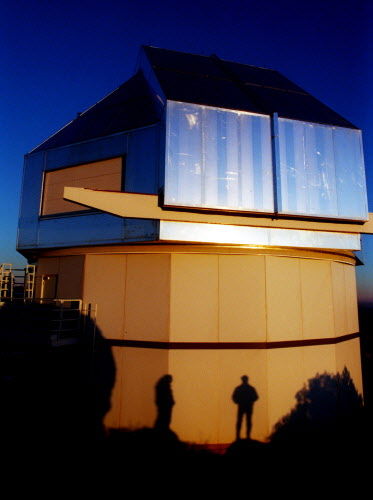.

NASA will use the 20-year-old WIYN Telescope on Kitt Peak to further its search for habitable planets outside our solar system.
.
NASA needed an earthbound location for following up the exoplanet discoveries of its orbiting telescopes just when the National Science Foundation was looking to unload its share of the WIYN Telescope on Kitt Peak.
“Our friends at NSF came over and said ... ‘Any interest in a joint venture before we pull the plug on it?’” said Douglas Hudgins, program scientist for exoplanet exploration at NASA’s Astrophysics Division.
Hudgins said NASA looked at WIYN’s capabilities and decided it was a good match for its need to learn more about planets it had found orbiting distant stars with its Kepler Space Telescope and for future discoveries made closer by with Kepler’s K2 mission.
It also plans to equip the 3.5-meter telescope with an instrument that will perform “extreme precision Doppler spectrography,” said Hudgins.
It will be used to follow up discoveries that will be made around nearby stars in NASA’s upcoming TESS mission, he said.
TESS, the Transiting Exoplanet Survey Satellite, is expected to launch by 2018.
The National Optical Astronomy Observatory (NOAO) will continue to operate the telescope and will give its 40 percent share of its time to projects proposed by individual scientists that support NASA’s exoplanet program.
The telescope’s other partners are the universities of Wisconsin, Indiana and Missouri. The “Y” in its name came from original partner Yale University.
WIYN, which saw first light in 1994, is the second largest optical telescope on Kitt Peak.
“The WIYN is a really great telescope,” said Hudgins. Kitt Peak remains a good site for astronomy and the WIYN occupies “the best spot” there, he said.
NASA’s Kepler has found 4,178 exoplanet candidates using the transit method, which records a diminution of a star’s light when a planet passes in front of it.
It has confirmed 995 exoplanets in follow-up observations, which involve a measurement of the planet’s radial velocity — its tug on the host star. A few have been directly observed by the largest telescopes on Earth and in space.
The radial velocity measurement requires “very high precision,” said Hudgins.
It measures the slight shift toward the blue part of the spectrum when a planet passes in front of a star and tugs it toward the observer, and the slight shift toward red when it passes behind.
The smaller the planet, the more precision needed, said Hudgins, and the new instrument will be capable of measuring the tug from small, possibly Earthlike planets — the ultimate targets of the hunt.
Only a handful of such instruments exist, said Hudgins. “This is going to be the first such instrument openly available to the U.S. scientific community.”
NASA’s involvement is the happiest possible ending for WIYN and NOAO, said Kitt Peak Director Lori Allen.
It adds capabilities while preserving open access, she said.
John Salzer, chair of the Department of Astronomy at Indiana University, called the arrangement “an outstanding resolution to our funding crisis.”
In an email, Salzer said NASA’s involvement has “significant positive ramifications for the WIYN university partners in terms of new science opportunities.”
Quelle: Arizona Daily Star
4845 Views
